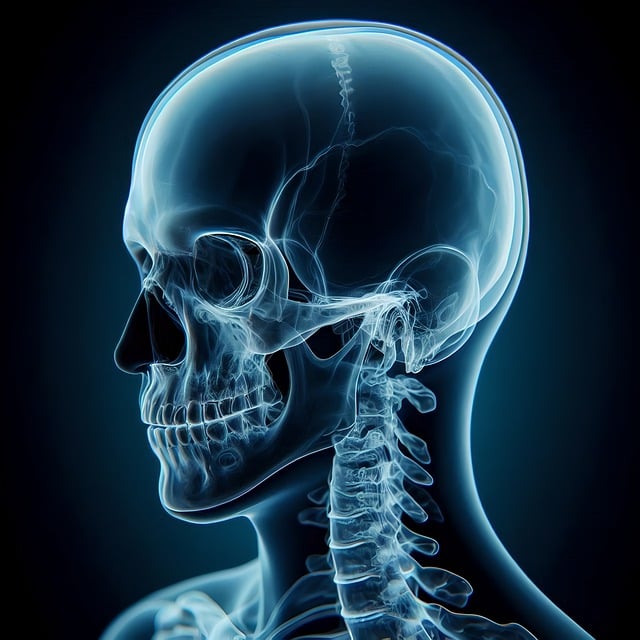CT scans and X-rays are key in pneumonia diagnosis imaging. CT scans offer high-resolution cross-sectional views, revealing subtle abnormalities missed by standard chest X-rays. While X-rays are suitable for basic conditions, CT scans differentiate tissue types, effectively tracking inflammation extent, effusions, pneumothorax, and even detecting lung bacteria or viruses. Cost and accessibility challenges exist, with CT scans being more expensive but providing superior detail, while X-rays offer lower-cost accurate diagnoses but may miss subtle abnormalities. Balancing these factors ensures efficient healthcare optimization based on individual needs and healthcare infrastructure.
When it comes to detecting lung diseases like pneumonia, choosing the right imaging tool is crucial. This article delves into the comparison between CT scans and X-rays, two essential tools in medical imaging. Understanding their unique capabilities and limitations is vital for accurate pneumonia diagnosis. We explore the advantages of CT scans over traditional X-rays, discuss cost and accessibility, and provide insights to help healthcare professionals make informed decisions for better patient care.
Understanding CT Scans and X-rays for Lung Disease
CT scans and X-rays are both crucial tools in the detection and diagnosis of lung diseases like pneumonia. These advanced imaging techniques offer doctors valuable insights into the internal structures of the lungs, enabling them to make accurate assessments. CT scans, short for computed tomography, use a series of high-resolution X-ray images taken from multiple angles to create detailed cross-sectional views of the body’s internal organs. This technology provides a comprehensive look at lung tissues, allowing healthcare professionals to identify abnormalities that might be invisible on standard chest X-rays.
X-rays, on the other hand, are a traditional imaging method that uses high-energy radiation beams to produce images of internal body structures. While they are excellent for detecting bone fractures and some basic lung conditions, CT scans offer a more nuanced picture due to their ability to differentiate between various types of tissues. In the context of pneumonia diagnosis imaging, CT scans have proven to be particularly effective in identifying the extent of inflammation, detecting complications like pleural effusions or pneumothorax, and even assessing the presence of bacteria or viruses within the lungs.
Advantages of CT Scans in Pneumonia Diagnosis
CT scans have emerged as a powerful tool in the field of pneumonia diagnosis, offering several advantages over traditional X-rays. One of the key benefits is their ability to provide detailed cross-sectional images of the lungs, allowing healthcare professionals to visualize and assess the extent of inflammation, fluid accumulation, or the presence of air spaces affected by the disease. This level of detail is crucial for making accurate diagnoses, especially in cases where symptoms are subtle or similar to other conditions.
Unlike standard X-rays, CT scans can capture high-resolution images, revealing subtle changes in lung texture that may indicate pneumonia. They are particularly useful in detecting early stages of the infection, when inflammation and changes in lung architecture are not yet apparent on a regular chest X-ray. This early detection is vital for initiating timely treatment, which can significantly improve patient outcomes and reduce potential complications associated with delayed diagnosis.
X-ray Limitations: Why They May Not Be Sufficient
While X-rays have long been a standard tool for diagnosing lung diseases, they have limitations when it comes to certain conditions. One of the primary constraints is their inability to provide detailed images of soft tissues like the lungs, which can make subtle abnormalities or inflammation challenging to detect. In the case of pneumonia, for instance, X-rays might only reveal general signs of consolidation in the lungs but may fail to show specific patterns indicative of different types of pneumonia or its extent.
Moreover, a single X-ray image offers a snapshot in time, offering little insight into changes that occur over time. This is particularly relevant in lung diseases where progression or improvement can vary significantly. In contrast, CT scans provide a more comprehensive and dynamic view, allowing healthcare providers to track the evolution of conditions like pneumonia, making them a superior choice for accurate diagnosis and monitoring treatment response.
Comparing Costs and Accessibility for Better Patient Care
When comparing CT scans and X-rays for lung disease detection, particularly in cases like pneumonia, cost and accessibility play significant roles in patient care. CT scans offer more detailed cross-sectional images of the lungs, allowing for better visualization of subtle abnormalities that might be missed on a standard chest X-ray. However, CT scanners are generally more expensive to operate and maintain, making them less accessible, especially in under-resourced healthcare settings.
In many cases, a chest X-ray can provide an accurate pneumonia diagnosis with reasonable cost-effectiveness. Yet, for early detection or when there’s concern about widespread lung involvement, a CT scan is often the preferred choice. Balancing these factors requires thoughtful consideration of healthcare infrastructure and patient needs, ensuring that both technologies are used optimally to deliver quality care without undue financial strain.
In terms of pneumonia diagnosis imaging, CT scans offer superior advantages over traditional X-rays due to their enhanced resolution and ability to detect subtle lung abnormalities. While X-rays serve as a foundational tool, CT scans provide more detailed information, enabling earlier and accurate detection of conditions like pneumonia. Considering the cost-effectiveness and accessibility of both options, healthcare providers can make informed choices to ensure optimal patient care, with CT scans being particularly beneficial for effective pneumonia diagnosis.
